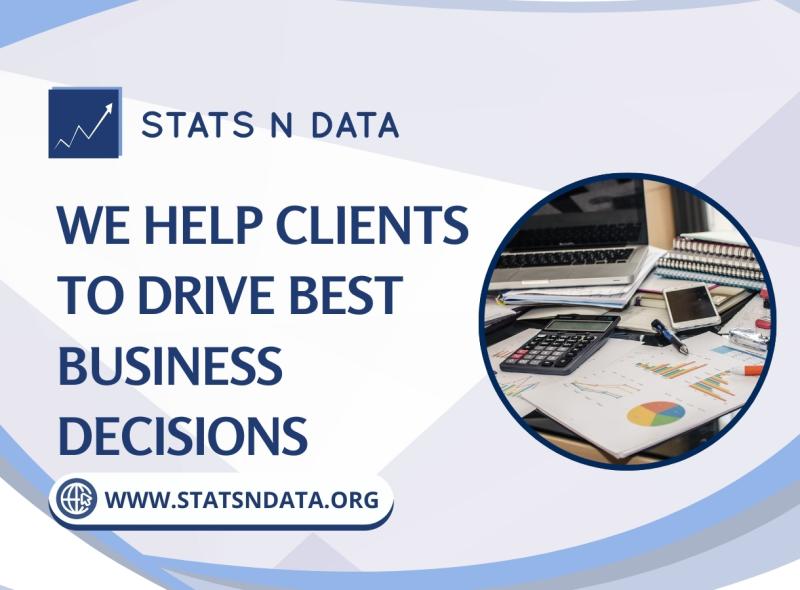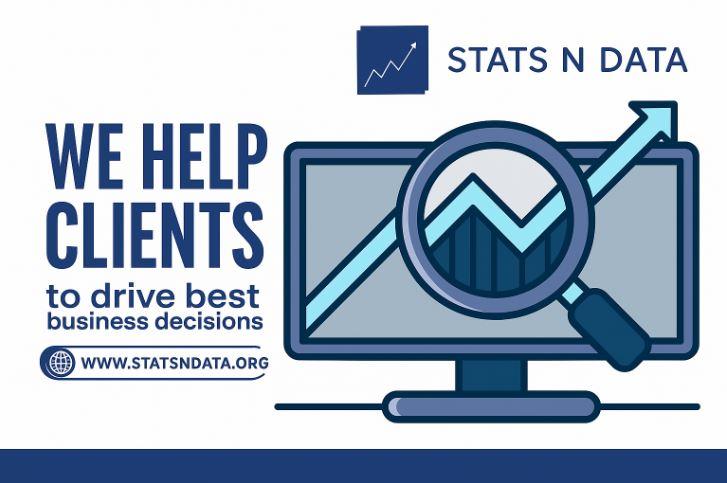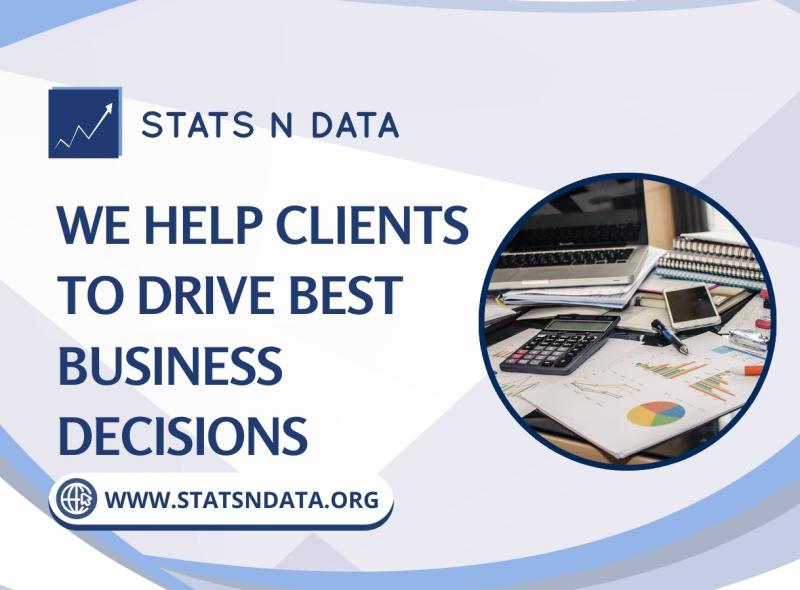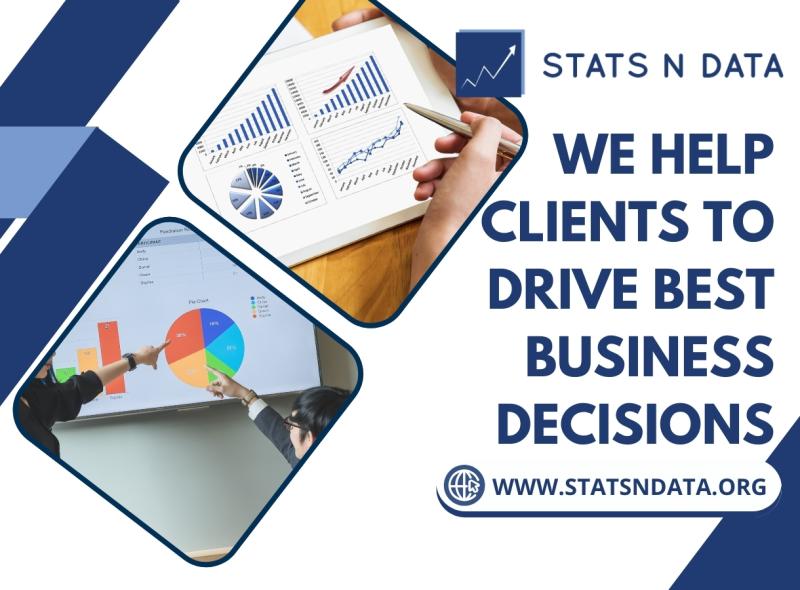Press release
Real Time Inventory Software Market 11.30% CAGR Growth Insights from APS Fulfillment Cin7 Orderhive IBM INTUENDI Katana MRP NetSuite Planergy Software and Redis Enterprise
The Real-Time Inventory Software market is experiencing significant growth, driven by the increasing demand for efficiency and accuracy in inventory management across various industries. As businesses seek to optimize their supply chain operations and improve customer satisfaction, the adoption of advanced inventory management systems has become essential. Real-time inventory software provides organizations with the ability to track stock levels, manage orders, and analyze inventory data instantaneously, leading to reduced costs and improved operational effectiveness. The market is projected to grow at a compound annual growth rate (CAGR) of 11.30% from 2025 to 2032, reflecting the rising importance of inventory optimization in today's fast-paced business environment.You can access a sample PDF report here: https://www.statsndata.org/download-sample.php?id=80336
This growth trajectory indicates that the Real-Time Inventory Software market is poised to expand significantly, with various factors contributing to its development. Increased automation in warehouses, the integration of artificial intelligence and machine learning, and the shift towards cloud-based solutions are all enhancing the capabilities of inventory management systems. As businesses strive to adapt to consumer demands and market fluctuations, the need for real-time visibility into inventory levels becomes paramount. By 2032, the market is expected to surpass a valuation that underscores the critical role of technology in inventory management. This upward trend highlights not only the importance of adopting sophisticated inventory solutions but also the broader transformation occurring in supply chain management practices. As companies continue to invest in innovative technology, the Real-Time Inventory Software market will likely play a pivotal role in shaping the future of business operations.
The Real-Time Inventory Software market has emerged as a pivotal component in the broader landscape of supply chain management and inventory control. As businesses increasingly recognize the necessity of efficient inventory management systems, the demand for innovative inventory tracking solutions is on the rise. This software is designed to provide real-time visibility into stock levels, streamline operations, and enhance decision-making processes. The scope of this market encompasses a wide range of industries, including e-commerce, retail, and manufacturing, all of which benefit from robust inventory management solutions.
Recent developments in the market have been fueled by technological breakthroughs and strategic partnerships between software providers and businesses seeking to optimize their inventory operations. These advancements include the integration of artificial intelligence (AI) to improve inventory forecasting and analytics, as well as the growing trend of cloud-based inventory management systems that offer flexibility and scalability. Moreover, the increasing need for real-time data visibility has prompted many companies to invest in automated inventory systems that can seamlessly integrate with existing enterprise resource planning (ERP) systems.
For executives, investors, and decision-makers, the actionable insights derived from these trends are crucial for making informed choices. The adoption of real-time inventory software positions organizations to enhance operational efficiency, reduce costs, and improve customer satisfaction through accurate and timely stock management. As the market continues to evolve, staying ahead of these trends will be vital for maintaining competitive advantage.
Key Growth Drivers and Trends
Several key growth drivers are shaping the Real-Time Inventory Software market. Sustainability is becoming a central focus for businesses aiming to reduce waste and optimize resource utilization. Companies are increasingly adopting inventory management solutions that not only improve efficiency but also contribute to environmental sustainability. Digitization is another significant driver, as businesses transition from traditional inventory practices to data-driven approaches that leverage real-time insights.
Shifting consumer expectations are also influencing the market dynamics. Customers demand faster delivery times and improved service levels, pushing retailers and e-commerce businesses to adopt inventory tracking solutions that enable real-time stock visibility. Alongside these drivers, transformative trends such as AI integration and product customization are revolutionizing the inventory management landscape. AI-powered inventory analytics tools provide actionable insights, enabling businesses to make data-driven decisions and enhance their inventory optimization strategies.
Emerging technologies also play a crucial role in the market's evolution. The Internet of Things (IoT) is enabling real-time data collection from various points in the supply chain, enhancing inventory accuracy and visibility. Additionally, the application of blockchain technology is providing unprecedented transparency and security in inventory management, further driving the demand for robust inventory control software.
As organizations continue to navigate these trends, the adoption of advanced inventory management solutions will be essential for maintaining operational efficiency and meeting evolving consumer needs.
Market Segmentation
The Real-Time Inventory Software market can be segmented into distinct categories based on type and application.
Segment by Type:
- Local
- Cloud-Based
Segment by Application:
- E-Commerce
- Retail
- Others
Local inventory management systems offer businesses the advantage of on-premises data storage and control, suitable for organizations with specific security and customization needs. In contrast, cloud-based inventory management systems are gaining popularity due to their scalability, accessibility, and cost-effectiveness, allowing businesses of all sizes to leverage advanced inventory tracking solutions without the burden of extensive infrastructure investments.
In terms of application, the e-commerce sector is experiencing significant growth in the adoption of real-time inventory software, driven by the need for accurate stock visibility and efficient order fulfillment. Retail businesses are also increasingly recognizing the importance of effective stock management software to enhance customer experiences and optimize inventory levels. Other industries, including manufacturing and logistics, are leveraging these solutions to streamline operations and improve supply chain efficiency.
Competitive Landscape
The Real-Time Inventory Software market is characterized by a competitive landscape featuring several key players striving to enhance their offerings and expand their market reach. Notable companies include:
- APS Fulfillment: Known for its innovative inventory management solutions, APS Fulfillment focuses on optimizing supply chain operations through advanced software that enhances real-time visibility and accuracy.
- Cin7 Orderhive: This company combines inventory management with point-of-sale and e-commerce capabilities, enabling businesses to streamline their operations and improve inventory tracking across multiple channels.
- IBM: With a strong emphasis on AI integration, IBM offers advanced analytics tools that empower businesses to forecast inventory needs and optimize stock levels effectively.
- INTUENDI: Specializing in automated inventory management systems, INTUENDI helps businesses reduce excess inventory and improve cash flow through smart stock management solutions.
- Katana MRP: This platform provides manufacturers with real-time inventory tracking and production planning tools, helping them manage their resources efficiently.
- NetSuite: As a leading provider of cloud-based enterprise resource planning solutions, NetSuite offers comprehensive inventory management features that cater to businesses of all sizes.
- Planergy Software: This company focuses on procurement and inventory management, helping organizations optimize their purchasing processes and enhance inventory control.
- Redis Enterprise: Known for its high-performance database solutions, Redis Enterprise supports real-time inventory tracking and management for businesses with complex inventory needs.
- TIBCO Software: TIBCO offers a range of inventory management solutions that integrate with existing systems, enabling businesses to achieve real-time visibility and data-driven decision-making.
- Zoho Inventory: This user-friendly platform provides small and medium-sized businesses with powerful inventory management tools, including automated stock tracking and reporting features.
These companies are actively launching new features, expanding their service offerings, and forming strategic partnerships to enhance their competitive positions. As the demand for real-time inventory software continues to grow, these players are well-positioned to capitalize on emerging opportunities in the market.
Opportunities and Challenges
As the Real-Time Inventory Software market continues to expand, several opportunities and challenges present themselves to businesses and software providers alike. Untapped niches in specific industries, such as healthcare, food and beverage, and logistics, offer potential for growth as organizations seek tailored inventory management solutions to meet their unique needs. Evolving buyer personas, particularly with the rise of e-commerce and direct-to-consumer models, require businesses to adopt innovative inventory tracking solutions that enhance customer experiences and streamline operations.
However, challenges also exist, including regulatory hurdles that can impede the adoption of certain inventory management technologies. Businesses must navigate compliance requirements and ensure that their inventory tracking solutions meet industry standards. Additionally, supply chain gaps and disruptions can pose significant obstacles, particularly in a globalized economy where inventory management is critically tied to international trade and logistics.
To address these challenges, organizations can leverage inventory analytics tools to identify potential risks and develop proactive strategies. Implementing automated inventory systems can also enhance accuracy and reduce the burden of manual tracking, improving overall efficiency in inventory management.
Technological Advancements
The Real-Time Inventory Software market is at the forefront of technological advancements, with several cutting-edge tools transforming the industry landscape. Artificial intelligence (AI) is revolutionizing inventory management by providing businesses with predictive analytics and insights that enhance inventory forecasting. With AI-driven inventory analytics tools, organizations can anticipate demand fluctuations, optimize stock levels, and improve overall inventory accuracy.
Digital twins, virtual representations of physical inventory systems, enable businesses to simulate and analyze inventory processes in real-time, providing valuable insights for optimization. The Internet of Things (IoT) plays a critical role in this transformation by enabling real-time data collection and monitoring, allowing organizations to track inventory levels and conditions across multiple locations.
Blockchain technology is also gaining traction, offering a secure and transparent way to manage inventory transactions. By leveraging blockchain, businesses can enhance traceability, reduce fraud, and improve collaboration across the supply chain.
As these technological advancements continue to evolve, the Real-Time Inventory Software market will likely see increased adoption of innovative solutions that enhance operational efficiency, reduce costs, and improve customer satisfaction.
Research Methodology and Insights
STATS N DATA employs a rigorous research methodology to ensure comprehensive and robust insights into the Real-Time Inventory Software market. Our approach includes both top-down and bottom-up methodologies, utilizing primary and secondary data collection techniques to gather valuable information.
Primary data is collected through interviews with industry experts, software providers, and end-users, providing firsthand insights into market trends and challenges. Secondary data is sourced from reputable industry reports, market analyses, and academic publications, ensuring a well-rounded understanding of the market landscape.
Multi-layer triangulation is employed to validate findings, ensuring the accuracy and reliability of the insights presented. This thorough research methodology positions STATS N DATA as a trusted authority in the Real-Time Inventory Software market, providing executives, investors, and decision-makers with the information they need to navigate this dynamic and evolving landscape.
The Real-Time Inventory Software market is poised for significant growth as businesses increasingly recognize the importance of effective inventory management in today's fast-paced environment. With advancements in technology, shifting consumer expectations, and the demand for sustainable practices driving market trends, organizations must stay informed and adapt to remain competitive. STATS N DATA is committed to providing authoritative insights and analysis, empowering businesses to leverage real-time inventory software for improved operational efficiency and enhanced customer satisfaction. As we continue to monitor developments in this space, we look forward to playing a pivotal role in shaping the future of inventory management solutions.
Get 30% Discount On Full Report: https://www.statsndata.org/ask-for-discount.php?id=80336
In the fast-paced world of retail, inventory management often stands as a formidable challenge. A key player in the industry found itself grappling with a persistent issue that had begun to affect its operational efficiency and customer satisfaction. Despite investing in various inventory management systems, the company struggled to maintain accurate stock levels across its multiple locations. The result was a cascading series of problems, including overstocked items leading to increased holding costs, and stockouts that frustrated customers and caused missed sales opportunities. As competition intensified and consumer expectations evolved, the need for a robust solution became paramount. The company recognized that to remain relevant and competitive, it had to transform its approach to inventory management, moving from a reactive to a proactive stance.
In response to this pressing need, a comprehensive analysis was conducted by a team of data experts, who employed cutting-edge statistical techniques and real-time data analytics to assess the root causes of the inventory discrepancies. The analysis revealed a complex interplay of variables that were not being accounted for in the existing inventory management practices. Utilizing advanced algorithms and machine learning models, the team developed a ground-breaking strategy that incorporated real-time inventory tracking, demand forecasting, and automated replenishment processes. This innovative approach enabled the company to gain unprecedented visibility into its inventory levels, allowing for timely adjustments based on actual consumer behavior and trends. By integrating data from various sources, the strategy provided a holistic view of inventory across all locations, ensuring that stock levels were optimized in real time.
The impact of this new strategy was nothing short of transformative. Within months of implementation, the company experienced a significant increase in market share, as customers began to notice the enhanced availability of products they desired. Efficiency soared, with inventory turnover rates improving markedly, leading to reduced holding costs and waste. Revenue growth followed suit, as the enhanced inventory management system enabled the company to better meet customer demand, ultimately leading to higher sales figures. The ability to accurately forecast demand resulted in a streamlined supply chain, reducing lead times and improving supplier relationships. The once-struggling key player in the retail market emerged revitalized, not only reclaiming its competitive edge but also setting new benchmarks for inventory management excellence in the industry. This real-time approach to inventory management served as a powerful reminder of the importance of data-driven decision-making in navigating the complexities of modern retail.
For customization requests, please visit: https://www.statsndata.org/request-customization.php?id=80336
Q: What is real-time inventory software?
A: Real-time inventory software is a tool that enables businesses to track their inventory levels, orders, sales, and deliveries as they happen. This software updates inventory data instantly, allowing users to see the current stock levels and manage their inventory more effectively. By providing real-time visibility into inventory status, businesses can make informed decisions regarding stock replenishment, order fulfillment, and overall inventory management. This type of software typically integrates with other business systems, such as point-of-sale systems and e-commerce platforms, to ensure that all inventory-related data is synchronized across the organization.
Q: How does inventory management software work?
A: Inventory management software works by automating the processes involved in tracking and managing inventory. It uses a centralized database to store information about inventory items, including quantities, locations, sales, and supplier details. When a sale occurs or stock is received, the software updates the inventory records in real time. Users can input data manually or use barcode scanning technology to streamline the process. The software often includes features for generating reports, forecasting demand, and managing reorders. By providing accurate and up-to-date information, inventory management software helps businesses reduce stockouts, minimize excess inventory, and improve overall operational efficiency.
Q: What are the benefits of using inventory tracking solutions?
A: The benefits of using inventory tracking solutions are numerous. First, they provide real-time visibility into stock levels, allowing businesses to avoid stockouts and overstock situations. This visibility leads to improved forecasting and demand planning. Second, inventory tracking solutions enhance accuracy by reducing human errors associated with manual inventory management. They also streamline operations by automating tasks such as order processing and stock replenishment. Additionally, these solutions can help businesses improve customer satisfaction by ensuring that products are available when needed. Finally, they can lead to cost savings by optimizing inventory levels and reducing holding costs.
Q: How can I improve my inventory management?
A: Improving inventory management involves several strategies. First, implement an inventory management software solution to gain real-time visibility into stock levels and automate processes. Second, categorize your inventory using methods like ABC analysis to prioritize items based on their importance and value. Third, establish clear reorder points and safety stock levels to avoid stockouts. Regularly review inventory performance metrics, such as turnover rates and carrying costs, to identify areas for improvement. Additionally, consider adopting just-in-time (JIT) inventory practices to reduce excess stock. Finally, ensure that staff are trained on best practices and the use of inventory management tools to promote efficiency and accuracy.
Q: What features should I look for in stock management software?
A: When searching for stock management software, consider features that will enhance your inventory management processes. Key features include real-time inventory tracking, barcode scanning capabilities, and support for multiple locations or warehouses. Look for reporting and analytics tools that provide insights into inventory performance and trends. Integration options with other systems, such as e-commerce platforms and accounting software, are crucial for smooth operations. Additionally, features for demand forecasting, automated reordering, and stock alerts can significantly improve inventory management efficiency. A user-friendly interface and mobile access are also important for ensuring that your team can use the software effectively.
Q: How can cloud inventory management help my business?
A: Cloud inventory management can significantly benefit your business by providing flexibility, accessibility, and cost savings. With cloud-based systems, you can access your inventory data from anywhere with an internet connection, enabling real-time updates and decision-making. They often come with lower upfront costs since they operate on a subscription model, reducing the need for extensive hardware and IT support. Cloud systems also typically offer automatic updates, ensuring that you always have the latest features and security measures. Furthermore, cloud inventory management facilitates collaboration among teams across different locations, improving communication and efficiency in managing stock.
Q: What are the advantages of automated inventory systems?
A: Automated inventory systems offer several advantages that can enhance operational efficiency. First, they minimize human error by automating data entry and inventory tracking processes, leading to more accurate inventory records. Second, these systems save time by streamlining tasks such as order processing, stock counting, and reporting, which allows staff to focus on more strategic activities. Third, automated systems provide real-time insights into inventory levels, enabling better decision-making regarding stock replenishment and demand forecasting. Additionally, they can improve customer satisfaction by ensuring that products are available when needed and can facilitate better supplier relationship management through automated reordering processes.
Q: How do I choose the right inventory control software?
A: Choosing the right inventory control software involves several key steps. Start by assessing your business needs and inventory management challenges. Consider the size of your business, the complexity of your inventory, and your budget. Next, research various software options and evaluate their features, such as real-time tracking, reporting capabilities, and integration with other systems. Read user reviews and case studies to gauge the software's effectiveness in real-world scenarios. Request demos or trials to see how user-friendly the software is and how well it fits your workflow. Finally, consider the level of customer support offered by the software provider, as ongoing assistance can be crucial for a successful implementation.
Q: What are the key benefits of real-time inventory visibility?
A: Real-time inventory visibility provides several key benefits to businesses. First, it allows for more accurate inventory management by showing current stock levels, which helps prevent stockouts and excessive overstock. This leads to improved cash flow management as funds are not tied up in unsold inventory. Second, real-time visibility enhances order fulfillment efficiency, as businesses can quickly respond to customer demands and fulfill orders accurately. Third, it supports better decision-making, as managers have access to up-to-date information for forecasting and planning. Additionally, real-time visibility helps identify trends in sales and inventory movement, enabling businesses to adapt to changing market conditions rapidly.
Q: How can I integrate inventory tracking software with other systems?
A: Integrating inventory tracking software with other systems can be achieved through several methods. Many modern inventory management solutions offer built-in integrations with popular platforms, such as e-commerce sites, accounting software, and customer relationship management (CRM) systems. When selecting software, look for options that provide application programming interfaces (APIs) or pre-built connectors that facilitate integration. If your chosen software does not have native integrations, consider using middleware solutions that can bridge the gap between different systems. It is also essential to work closely with your IT team or a third-party consultant to ensure that the integration process is smooth and that data flows seamlessly between systems.
Q: What strategies can reduce inventory holding costs?
A: Reducing inventory holding costs can be achieved through several strategic approaches. First, practice demand forecasting to better align inventory levels with actual sales trends, minimizing excess stock. Implementing just-in-time (JIT) inventory practices can also help by reducing the amount of inventory on hand and decreasing storage needs. Regularly reviewing and optimizing your supply chain can identify areas for cost savings, such as negotiating better terms with suppliers. Consider using inventory management software to automate reorder processes, ensuring that stock is replenished only when necessary. Additionally, categorizing inventory based on turnover rates can help prioritize which items to keep in stock and which to reduce, ultimately lowering holding costs.
Q: How does inventory forecasting improve business operations?
A: Inventory forecasting improves business operations by providing insights into future inventory needs based on historical sales data, market trends, and seasonal fluctuations. Accurate forecasting helps businesses maintain optimal inventory levels, preventing stockouts that can lead to lost sales and customer dissatisfaction. It allows for better planning of purchasing and production schedules, ensuring that resources are allocated efficiently. Additionally, effective forecasting can improve cash flow management by reducing excess inventory and associated carrying costs. By making informed decisions about inventory levels, businesses can enhance overall operational efficiency, respond proactively to market changes, and improve customer service.
Q: What are the challenges of managing inventory without software?
A: Managing inventory without software presents several challenges that can hinder business operations. One major issue is the increased likelihood of human error, as manual tracking methods can lead to inaccuracies in inventory counts and data entry. This can result in stockouts, overstock situations, and ultimately lost sales. Additionally, manual processes are often time-consuming, requiring significant labor to conduct regular stock counts and track inventory movements. Without real-time visibility, businesses may struggle to make informed decisions regarding inventory management, leading to inefficient operations. Lack of accurate data can also impair forecasting and planning efforts, resulting in suboptimal inventory levels and potential cash flow issues.
Q: How can I track inventory in multiple locations effectively?
A: Tracking inventory in multiple locations effectively requires a robust inventory management system that supports multi-location functionality. Start by implementing an inventory management software solution that allows you to manage stock across various warehouses or retail locations from a centralized platform. Use barcode scanning technology to streamline data entry and ensure accuracy when receiving or transferring stock between locations. Establish clear processes for inventory counts and transfers, and schedule regular audits to maintain accurate records. Real-time tracking features will help you monitor stock levels across all locations, enabling quick decision-making regarding stock replenishment and distribution. Training staff on best practices for managing inventory across multiple sites is also crucial for ensuring consistent accuracy and efficiency.
Related Reports:
Hydrogen Pressure Sensors Market
https://www.statsndata.org/report/hydrogen-pressure-sensors-market-2330
Non-Box Trailers Market
https://www.statsndata.org/report/non-box-trailers-market-26806
John Jones
Sales & Marketing Head | Stats N Data
Email: sales@statsndata.org
Website: www.statsndata.org
STATS N DATA is a trusted provider of industry intelligence and market research, delivering actionable insights to businesses across diverse sectors. We specialize in helping organizations navigate complex markets with advanced analytics, detailed market segmentation, and strategic guidance. Our expertise spans industries including technology, healthcare, telecommunications, energy, food & beverages, and more.
Committed to accuracy and innovation, we provide tailored reports that empower clients to make informed decisions, identify emerging opportunities, and achieve sustainable growth. Our team of skilled analysts leverages cutting-edge methodologies to ensure every report addresses the unique challenges of our clients.
At STATS N DATA, we transform data into knowledge and insights into success. Partner with us to gain a competitive edge in today's fast-paced business environment. For more information, visit https://www.statsndata.org or contact us today at sales@statsndata.org
This release was published on openPR.
Permanent link to this press release:
Copy
Please set a link in the press area of your homepage to this press release on openPR. openPR disclaims liability for any content contained in this release.
You can edit or delete your press release Real Time Inventory Software Market 11.30% CAGR Growth Insights from APS Fulfillment Cin7 Orderhive IBM INTUENDI Katana MRP NetSuite Planergy Software and Redis Enterprise here
News-ID: 4158190 • Views: …
More Releases from STATS N DATA

Intelligent Virtual Assistant Software Market 24.60% CAGR Growth Insights from N …
The Intelligent Virtual Assistant (IVA) software market is experiencing significant growth, driven by advancements in artificial intelligence and increasing demand for automated customer service solutions. Businesses across various sectors are increasingly adopting IVAs to enhance user engagement, streamline operations, and reduce operational costs. These virtual assistants leverage natural language processing, machine learning, and voice recognition technologies to provide personalized interactions and improve customer satisfaction. The market is projected to grow…

Enterprise Field Service Management Software Market 12.20% CAGR Growth Insights …
The Enterprise Field Service Management Software market is experiencing significant growth, driven by the increasing need for organizations to enhance operational efficiency and improve customer satisfaction. This software enables businesses to manage their field operations effectively, including scheduling, dispatching, and tracking field service personnel. As companies across various sectors recognize the importance of real-time data and streamlined processes, the demand for robust field service management solutions is on the rise.…

Patient Health Record Software Market 11.64% CAGR Growth Insights from Allscript …
The Patient Health Record (PHR) software market is experiencing significant growth, driven by the increasing demand for efficient healthcare management solutions. As healthcare systems worldwide strive for improved patient care and streamlined operations, PHR software has emerged as a crucial tool for both patients and healthcare providers. This software allows patients to manage their health information in a secure, accessible manner, while also facilitating better communication and coordination with healthcare…

CFD Based Thermal Simulation Software Market 9.20% CAGR Growth Insights from Men …
The CFD-based thermal simulation software market is experiencing significant growth, driven by the increasing demand for advanced simulation tools across various industries. Computational Fluid Dynamics (CFD) software enables engineers and designers to analyze thermal behavior and fluid flow in complex systems. This technology is particularly vital in sectors such as automotive, aerospace, electronics, and energy, where thermal management plays a crucial role in product performance and safety. As industries strive…
More Releases for Real
Why MCS Gearup Is Redefining Tactical Gear Shopping: Real Service, Real Quality, …
Florida, US, 27th July 2025, ZEX PR WIRE, In a market saturated with high prices, overseas knockoffs, and poor customer service, MCS Gearup is carving a new path that puts authenticity, affordability, and American-made quality back at the center of the tactical gear experience. Based in Bonita Springs, Florida, MCS Gearup is an e-commerce store selling tactical equipment. It's a company on a mission to redefine serving customers in this…
BrainManager.io Reviews: Real Results from Real Users
Unlock your mental potential with BrainManager.io-real users share real results from IQ, focus, and burnout tests that deliver clear, science-backed insights.
Image: https://www.abnewswire.com/upload/2025/06/2ee8c5efc51e4ac4de6121e1ac816652.jpg
Understanding how your brain works can be essential for personal and professional development in an increasingly fast-paced and technologically linked environment. Whether you want to increase productivity, improve attention, or just discover more about your cognitive abilities, BrainManager.io is developing as a go-to option for anyone trying to take…
Real Playlists Review 2024: Is Real Playlists Legit?
Discover if Real Playlists is legit in 2024. Learn about their Spotify playlist services, genuine listener engagement, success stories, and how they help artists grow organically.
In the competitive music industry, Spotify playlist placement can make or break an artist's career. Real Playlists, a platform dedicated to helping artists gain exposure through curated Spotify playlists, has gained attention for its claims of authentic, organic growth. But is Real Playlists a legitimate…
Mark Sincavage, Real Estate Expert, Unveils "Let's Talk Real Estate" - Your Ulti …
Mark Sincavage, a prominent Real Estate Professional, proudly presents "Let's Talk Real Estate" (https://letstalkrealestate.com), an information hub that has redefined the real estate landscape since 2020. With a clear-cut mission to serve as the go-to destination for all things related to residential real estate, this platform caters to everyone, from first-time homebuyers seeking guidance to seasoned investors keen on the latest market insights.
Informative Real Estate Insights
Mark Sincavage and his dedicated…
Real Time Bookkeeping Changes to Cloud9 Real Time
SAN DIEGO, CA - Real Time Bookkeeping (RTB) is a licensed Commercial Host by Intuit and an accredited Managed Service Provider by MSP Alliance. The industry changer is revealing just how far they have come in a recent move to the name Cloud9 Real Time. “Our organization is excited about the change. We have grown over 500% in just under 18 months and the name change is part of the…
Real Estate is a Real Time Business
SAN FRANCISCO, Mar 17, 2010 - Crosspollinate.org soft-launched this month the first version of its real time search and marketing service for Real Estate professionals . Although real-time search engines have proliferated over the last few months, this is the first offering of this kind available for the Real Estate industry.
Real time search is a new kind of service which lets individuals and businesses know what is happening around…
